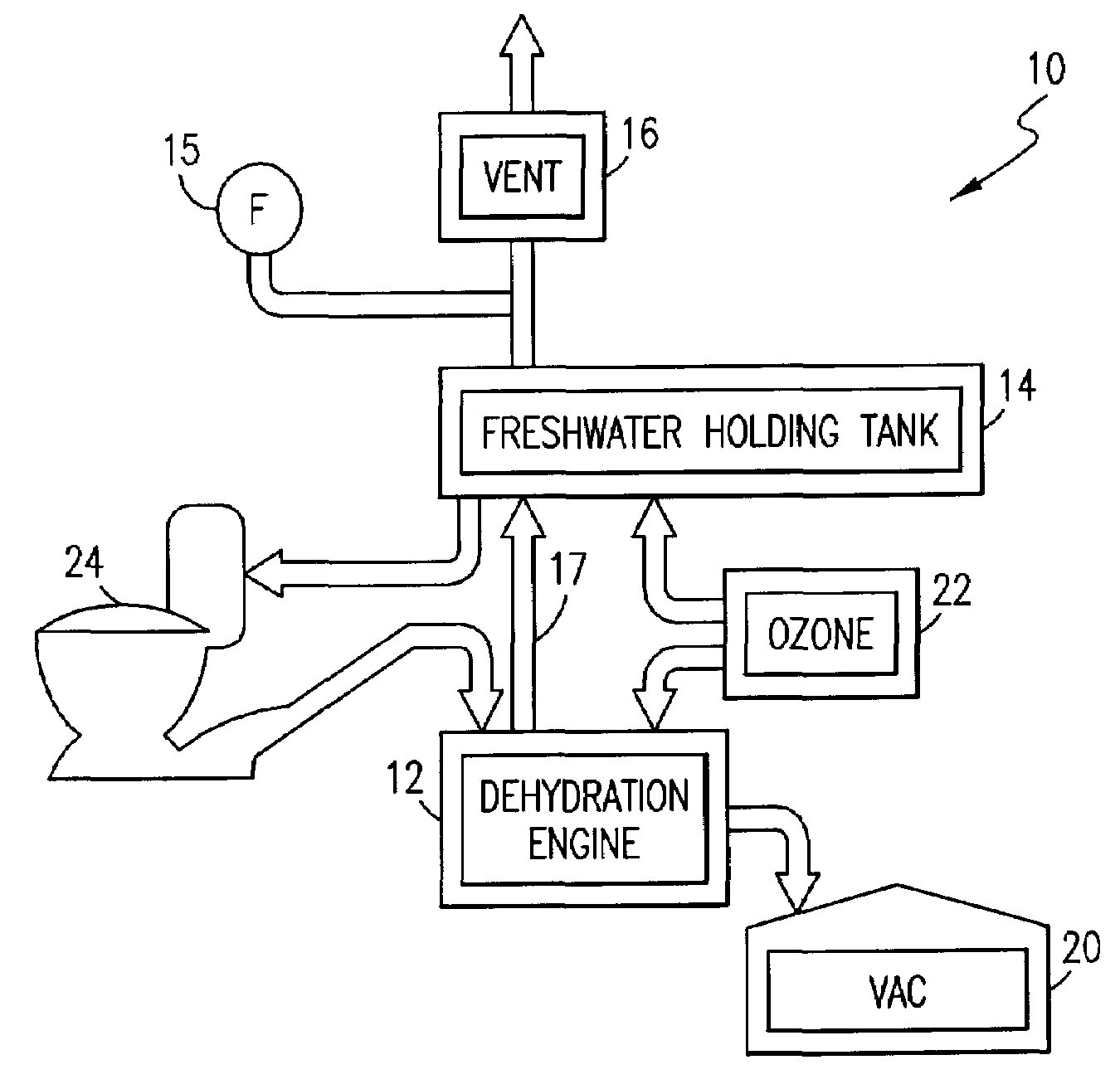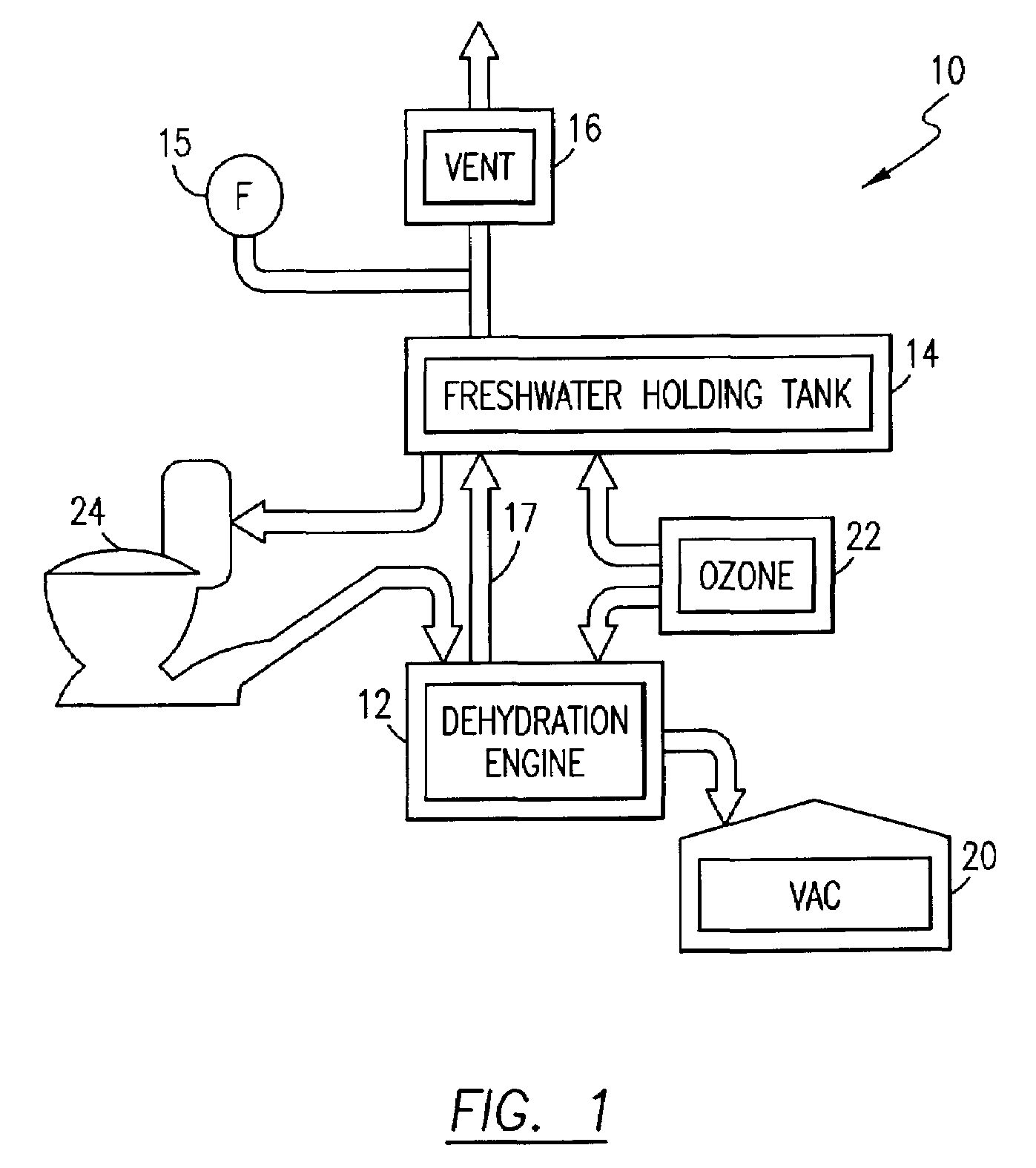Mobile or stationary modular self-contained dehydration toilet, dehydration engine, and gray water recovery system
a self-contained, toilet technology, applied in the direction of multi-stage water/sewage treatment, filtration separation, separation process, etc., can solve the problems of system requirements for an inefficient array of chemical elements, inability to safely employ toxic chemicals, contamination to flocculate and float to the surface, etc., to reduce human solid waste
- Summary
- Abstract
- Description
- Claims
- Application Information
AI Technical Summary
Benefits of technology
Problems solved by technology
Method used
Image
Examples
Embodiment Construction
[0041]Referring now to the drawings and, in particular, to FIG. 1, the present invention is shown generally at 10 schematically in a block diagram form that includes a dehydration engine 12 that has an input from toilet or toilets 24 In a single toilet embodiment, a toilet 24 could be connected directly as an input to the dehydration engine. The dehydration engine 12 is also connected by steam conduit 17 to a fresh water holding tank 14 as an output, an exhaust fan 15, and a steam vent 16 that is also connected into the fresh water holding tank 14 for recovery of condensate water resulting from the cooled steam. An ozone source 22 is also provided into the dehydration engine for sterilization and reduction of odors. The process is complete when the solid waste is heated so that the liquids evaporate resulting in a residue in the form of a dry powder that has been sanitized and remains in the dehydration engine 12 until removed though the central vacuum or an internal vacuum 20 which...
PUM
| Property | Measurement | Unit |
|---|---|---|
| temperature | aaaaa | aaaaa |
| temperatures | aaaaa | aaaaa |
| temperature | aaaaa | aaaaa |
Abstract
Description
Claims
Application Information
 Login to View More
Login to View More - R&D
- Intellectual Property
- Life Sciences
- Materials
- Tech Scout
- Unparalleled Data Quality
- Higher Quality Content
- 60% Fewer Hallucinations
Browse by: Latest US Patents, China's latest patents, Technical Efficacy Thesaurus, Application Domain, Technology Topic, Popular Technical Reports.
© 2025 PatSnap. All rights reserved.Legal|Privacy policy|Modern Slavery Act Transparency Statement|Sitemap|About US| Contact US: help@patsnap.com



